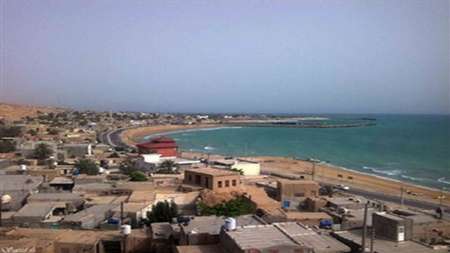
It is located on the north coast of the Persian Gulf in what is now the Iranian province of Bushehr. It was destroyed around 970 CE. Its ruins are located approximately 220 kilometers east of Bushehr and 380 kilometers west of Bandar Abbas. Siraf controlled three ports: Taheri Port, Kangan Port and Dayer Port.
Siraf was originally known as Ardeshir Ab due to the fact that Ardeshir Babakan set up a waterway network here in order to facilitate the port activities, English newspaper, Iran Daily, reported.
According to David Whitehouse, one of the first archeologists to excavate the ancient ruins of Siraf, the port gained prominence due to the thriving maritime trade between Persian Gulf and the Far East in view of the huge demand for consumer goods and luxury items at the time. The first contact between Siraf and China occurred in 185 CE and by the fourth century CE it was a busy port.
However, over time trade routes shifted to the Red Sea and Siraf was forgotten. Ivory objects from East Africa, pieces of stone from India, and lapis from Afghanistan were discovered in Siraf during past archeological excavations. Ruins of luxurious houses of extremely rich traders who made their wealth through the port's success have been unearthed, historicaliran.blogspot.de reported.
One of the historical structures at Siraf is the Nassori Castle, built in the 19th century. The fort was well constructed with massive brick walls and towers enclosing courtyards for public and private use. Its entrance is a large wooden door facing the Persian Gulf and beyond the door are staircases leading to the second floor.
The most remarkable feature of the fort is a balcony decorated with eighteen scenes from Shahnameh (an epic by Ferdowsi) in molded and carved stucco. They represent events from the lives of the great heroes such as Rostam and scenes with rulers such as Sassanid King Khosrow Anoushiravan. They were probably adapted and copied from the illustrations from Shahnameh. They are still considered unique both in terms of pictorial interpretation of the Shahnameh and Qajar decoration.
In addition to the castle, Siraf is home to an ancient congregational mosque and cemetery. David Whitehouse found evidence that the earliest mosque in Siraf dates to the ninth century CE. He found ruins of a congregational mosque surrounded by many other smaller mosques. Archeologists have identified Sassanid layers and artifacts near the mosque in 2009.
Furthermore, some burial sites were also discovered in Siraf. The rock cut tombs of the burial site bear a similarity to those found on Khark Island and may have belonged to the region's Jewish community.
There are also chamber tombs, typical of Zoroastrian Towers of Silence, found in the hillsides behind Siraf.
Remains of a shipwreck were found in Persian Gulf near the port of Siraf in 2006. Initial studies on the shipwreck revealed that it was a merchant ship belonging to either the Parthian (248 BCE-224 CE) or Sassanid (224-651 CE) eras. It was discovered at sunken at a depth of 70 meters. More than 40 ceramic amphora-like jars with no handle were filmed by an underwater robot. The ceramic jars were found scattered on the seabed.

Add new comment